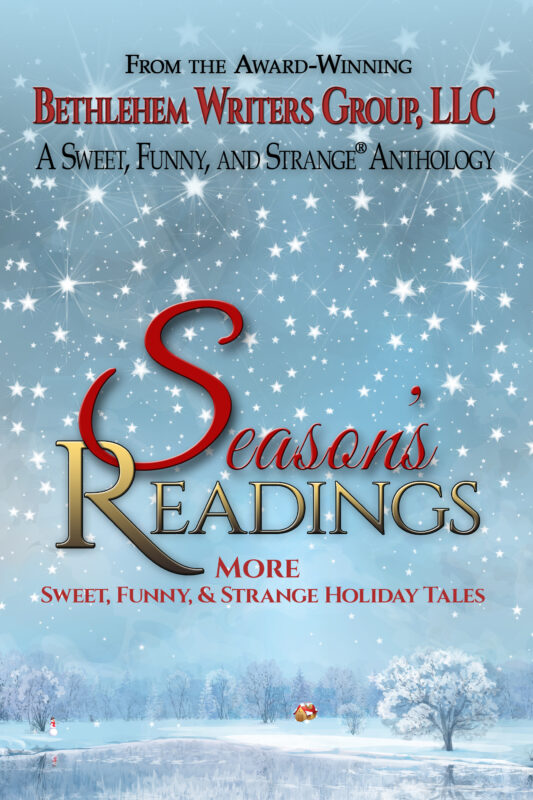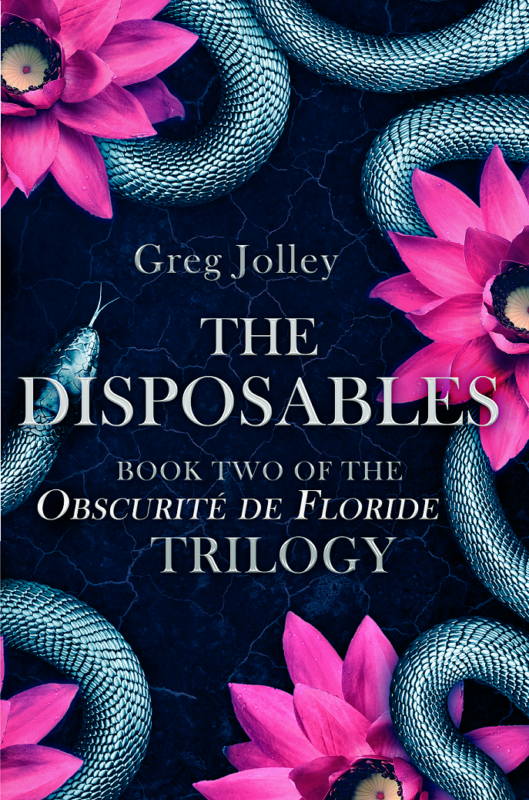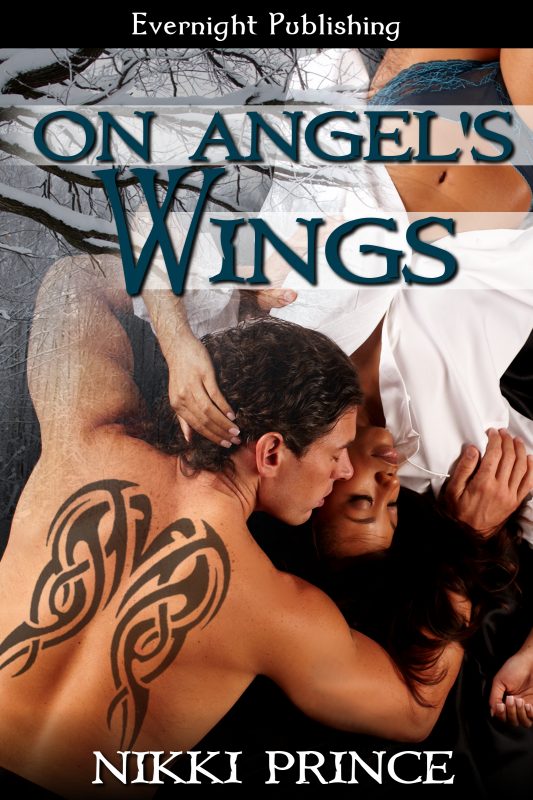Getting in Touch with the Right Side of my Brain by Peter J Barbour
July 13, 2022 by Bethlehem Writers Group in category From a Cabin in the Woods by Members of Bethlehem Writers Group tagged as creativity, innovation, muse, neurologist, Peter Barbour
Betty Edwards’ book, “Drawing on the Right Side of the Brain (1),” opened my eyes to a reality I hadn’t fully appreciated. As a neurologist, I understand the functions assigned to various locations within the brain. However, I never completely respected the dominant hemisphere’s power. Most people are right-handed indicating the left half of the brain is their dominant hemisphere, the center for logic and language. If I let it, my dominant hemisphere rules, governing by talking constantly and ruminating, at times, keeping me up at night reviewing, reminding, advising, revising, and creating anxiety. It can be unrelenting and exhausting.
Pop culture has long espoused that the right, non-dominant, hemisphere, in right-handed people, is the center of creativity. However, functional anatomic studies have not proven that hypothesis; and, in general, the concept of strict lateralization of creativity to the right side of the brain is no longer accepted. Nevertheless, that historic, theoretic construct remains useful for this discussion. (2)
What happened to the right half of the brain or wherever innovation resides? According to Betty Edwards, the education system took care of that by heavily favoring a curriculum of dominant hemisphere activities with emphasis on communicating through reading, writing, speaking, and exercising logic. The dominant side of the brain perceives the parts of things and processes in a linear sequential fashion. On the other hand, the innovative centers tend to be more spontaneous and conscious of the whole.
Right brain development became stunted halfway through elementary school. Betty Edwards points out, if one tries to sketch a picture of something, for many of us whose left-brain dominates, the depiction looks primitive, like something created in fourth grade. Try to draw anything and the left brain won’t allow it. Instead, it names the thing, consciously or unconsciously, and the right hand obeys producing a stereotypical likeness of the object rather than the article observed. The dominant hemisphere takes over limiting creativity.
How can I shut down my left hemisphere, let the right-side shine, and escape the constant banter interfering with sleep and relaxation, and stifling inventiveness? What happens when I finally break away, escaping the left hemisphere’s tyranny. I find quiet and peace. Time flies.
Meditation is one way to achieve this. I turn off the voice, listen to my surroundings, concentrate on breathing. Who knows, if I focus on nothingness long enough, someone wiser than I once suggested, I may hear the angels whispering. Our North American culture doesn’t generally allow for guiltless free unproductive time, making meditation difficult.
I’ve discovered other activities with the hope of reaching the same end. My answer to that conundrum involves incorporating a constructive activity with the mediative practice. I stand in a stream with water rushing past me. An egret walks slowly on the opposite shore staring in my direction. I cast and retrieve a feather tied to a hook at the end of a long line, concentrate on the process, commune with nature. I may even catch a fish. I play a musical instrument, doesn’t matter how well. Music is about spatial relationships, a non-dominant hemisphere specialty. I paint a picture and become a part of the scene, lost in the color, and the lines. I walk among the flowers on the canvas, smell their fragrance, feel the breeze ruffling the leaves. Free the right hemisphere. Time flies.
That brings me to writing/composing. Harness the left brain. Creating fiction is like painting. My pallet is filled with words. I paint with them, craft images, dissolve into the story, live the mystery, fly among the stars to strange worlds, survive a dystopia, fall in love, reminisce, dream, get lost, find my way, escape into a world I create.
1. Drawing on the Right Side of the Brain, Betty Edwards, 1979, Simon and Shuster.
2. Robert Schmerling, Harvard Health Publishing

Peter Barbour has been writing for over thirty years. He published “Loose Ends,” a memoir, in 1987, followed by a series of short stories from 1992 to 1995. “The Fate of Dicky Paponovitch” won Raconteur of the Month, May 1994, Raconteur Magazine, Susan Carrol Publishing. Since 2015, he has published more than twenty-five short stories which have appeared in shortbreadstories.co.uk, storystar.com, and shortstory.me, The Piker Press, Rue Scribe, Star Light Path, and ArtPost Magazine. His short story, “Why Bats Live in Caves,” can be found in “Fur, Feathers, and Scales: Sweet, Funny, and Strange Animal Tales,” an anthology from the Bethlehem Writers Group. Barbour wrote and illustrated three children’s books, “Gus at Work,” “Oscar and Gus,” and “Tanya and the Baby Elephant.” He is a member of the Bethlehem Writers Group. Links to his stories and illustrations can be found at www.PeteBarbour.com Barbour enjoys deconstructing stories to see how they are put together. He grew up loving the Wizard of Oz series, and dutifully read each book in the series to his children. The hero goes on a journey is one of his favorite themes.
He loves the outdoors, and especially the Pacific Northwest, which serves as the setting for many of his stories. He is married, and likes to travel, which affords him the opportunity to absorb new experiences from which to write. Barbour attended the University of Pennsylvania as an undergraduate and Temple University School of Medicine where he earned his M.D. He completed his residency training in Neurology, at Stanford University School of Medicine and practiced medicine in the Lehigh Valley until 2015 when he retired.
He believes that what comes from the heart goes to the heart.
Pete’s Books

Peter Barbour has been writing for over thirty years. He published “Loose Ends,” a memoir, in 1987, followed by a series of short stories from 1992 to 1995. “The Fate of Dicky Paponovitch” won Raconteur of the Month, May 1994, Raconteur Magazine, Susan Carrol Publishing. Since 2015, he has published more than twenty-five short stories which have appeared in shortbreadstories.co.uk, storystar.com, and shortstory.me, The Piker Press, Rue Scribe, Star Light Path, and ArtPost Magazine. His short story, “Why Bats Live in Caves,” can be found in “Fur, Feathers, and Scales: Sweet, Funny, and Strange Animal Tales,” an anthology from the Bethlehem Writers Group. Barbour wrote and illustrated three children’s books, “Gus at Work,” “Oscar and Gus,” and “Tanya and the Baby Elephant.” He is a member of the Bethlehem Writers Group. Links to his stories and illustrations can be found at www.PeteBarbour.com Barbour enjoys deconstructing stories to see how they are put together. He grew up loving the Wizard of Oz series, and dutifully read each book in the series to his children. The hero goes on a journey is one of his favorite themes.
He loves the outdoors, and especially the Pacific Northwest, which serves as the setting for many of his stories. He is married, and likes to travel, which affords him the opportunity to absorb new experiences from which to write. Barbour attended the University of Pennsylvania as an undergraduate and Temple University School of Medicine where he earned his M.D. He completed his residency training in Neurology, at Stanford University School of Medicine and practiced medicine in the Lehigh Valley until 2015 when he retired.
He believes that what comes from the heart goes to the heart.
Books from Bethlehem Writers Group, LLC
Celebrate The Act of Gratitude
July 12, 2022 by Denise M. Colby in category The Writing Journey by Denise Colby, WritingAs we celebrate the Declaration of Independence this month, I wanted to share parts of a magazine article I wrote a few years back about freedom and the act of gratitude. I love reminders to be grateful in amongst the chaos of life. Including all the pieces that go with a writing career. I hope that it can be a source of encouragement to you. This was originally printed in WestCoast Magazine in July 2019. I’ve made some adjustments to fit a blog post rather than an article.

Another form of freedom we can celebrate is the act of gratitude. Google defines gratitude as “the quality of being thankful; the readiness to show appreciation for and to return kindness.” Wikipedia’s page takes it one step further and states; “Gratitude has been said to have one of the strongest links with mental health of any character trait. Grateful people are happier, less depressed, less stressed, and more satisfied with their lives and social relationships.”
I don’t know about you, but I would like to live a happier, less stressed life.
So how do we celebrate the act of gratitude?
We Can Show Gratitude With Words
Say ‘thank you’. It doesn’t matter how big or small the act is, saying these two words makes a difference. A quick email reply with the words thank you. If someone holds open the door, hands you something, pays you a compliment, or when the server delivers your food, just say thank you. It matters.
Write a note. Send a note to someone for whom you are grateful and tell them why. In my research I learned psychologists use this technique to help people with their overall mental health. Even just thinking or writing about someone you are grateful for can help.
Start a Gratitude Journal. I love to stop and think about what it is around me that I can be thankful for. It’s amazing the little things you will notice when you do this. Sometimes we are so caught up in our to-do list, we don’t stop to appreciate what is going on around us. Like the baby birds chirping, or the sun shining so that the flowers will open and bloom. If writing in a journal seems a bit overwhelming, another option is to write out three-five things you are thankful for at the end of the each day.
We Can Show Gratitude With Our Attitude
Change your perspective. Even in the mundane and ordinary parts of our life we can find ways to be grateful. I have to remind myself when the piles of mount clothesmore scream for attention, to say thanks for the clothes I have while I fold laundry. In the hurriedness of getting dinner on the table, I remind myself to say thanks for the options of what to put on the table, a table to sit at, and that it’s not the only meal for the day. When I get stopped at yet another red light, I stop and refocus my thoughts to be grateful for the vehicle I drive and the ability to be able to travel from one place to another. These small things are what life is all about. Being grateful for even the stressful stuff will help us deal with it better.
We Can Show Gratitude With Our Actions
Be kind. Kindness is defined as the quality of being friendly, generous, and considerate. Hold open the door, place flags on a cemetery grave, smile and say hi to a stranger. Celebrate someone else’s success, say a kind word, be encouraging in all your Facebook comments, offer to help, give compliments, and refuse to gossip. And don’t forget to be kind to yourself too.
Show grace. Grace means different things to people, but the dictionary’s definition is “goodwill” and synonyms include the terms tenderness, compassion, generosity, and kindness. None of us are perfect and we will make mistakes. Forgiveness, patience, understanding, or even just a hug to let someone know you care, can go a long way.
This year, as we celebrate our nations birthday, let us all show a little more gratitude toward others and ourselves.
Happy Birthday America!
As I write this, I want to show my own acts of gratitude with saying thank you to my fellow writers. The love and support from the writers in the writing groups I belong to is wonderful and something I appreciate. We don’t always get to interact live with one another, but sharing blog posts, emails, and everything in between has a huge impact in encouraging me to keep going. So thank you! I wouldn’t be here without you.
Mothers and Daughters theme for my next Paris WW2 novel… how the dynamic shapes us growing up by Jina Bacarr
July 11, 2022 by Jina Bacarr in category Jina’s Book Chat, Writing tagged as daughters, historical fiction, Mothers, Paris, women's fiction
When I was a little girl about six, I lived with my Irish grandmother when my mom was away doing amazing things… I thought she was a princess doing good deeds because I heard from my grandmum about the ‘people she helped’ and saw her wearing beautiful dresses in the pictures she brought home.
Ah, yes… my grandmum loved to spin stories about how my mom was the spitting image of her grandmother, an English lady of the realm who fell in love with an Irish rogue and ran away from home with him.
My mother was a model.
The people she ‘helped’ were the ladies in the audience.
And the dresses I saw were designs she wore for shows.
And the part about English royalty? My grandmum swore it was true, her eyes sparkling as she mixed up Irish potato pancakes (boxty, my favorites) and I believed it.
Because what little girl doesn’t want to believe her mom is a royal lady?
I still don’t know if the story is true, though my Great-Aunt Marie swore it was… and since she was a pious lady who lived her life as a lay sister among the nuns, who’s going to dispute it?
So what does this have to do with my upcoming Paris WW2 book?
It’s about the dynamics of how we see our mothers and how it shapes us growing up. My mum taught me to be a ‘lady’ and look for the good in everyone and never be selfish if we had extra cake or leftover pot roast and share it with someone who needed it. Since Mom was a great cook, she never lacked for takers.
My mom became the inspiration for the German girl’s ‘Mutti’ in my story. Kindness, understanding… and also the model for the American heiress’s mom… Philadelphia society with an Irish lineage.
Mothers and Daughters… a quilt rich with history and ideas… highs and lows… sorrows and sighs. But in the end, they’re our mothers and God bless them.
Jina —————–

Mom and me
————–
My next Paris WW2 book will be released in Fall 2022. More info coming!
Till then…
check out my Paris WW2 novels:

Paris 1940
The Lost Girl in Paris
My heroine, Angeline de Cadieux, is a Roma girl in WW2 Paris… she’s strong, fights in the Resistance… makes exquisite perfumes and comes up with an amazing marketing campaign during the war to boost morale in France.
Thank you!
The Resistance Girl
 Juliana discovers her grandmamma was a famous French film star in Occupied Paris & her shocking secret…
Juliana discovers her grandmamma was a famous French film star in Occupied Paris & her shocking secret…
CA https://www.amazon.ca/dp/B08DNDHDG4
AU https://amazon.com.au/dp/B08DNDHDG4
Linda O. Johnston Featured Author of the Month
July 7, 2022 by Linda O. Johnston in category Featured Author of the Month tagged as cozy mysteries, Dogs!, Harlequin Romantic Suspense, Linda O Johnston, mysteries, romance'

Linda O. Johnston enjoys writing, romance, puzzles, and dogs.
A former lawyer, Linda is now a full-time writer and has published 57 books so far, including mysteries and romantic novels. She has written several cozy mystery series including the Barkery & Biscuits Mysteries and Superstition Mysteries for Midnight Ink, and the Kendra Ballantyne, Pet-Sitter Mysteries and Pet Rescue Mysteries for Berkley Prime Crime. She also writes romances for Harlequin, including Harlequin Romantic Suspense. Writing as Lark O. Jensen, her latest release is Bear Witness from Crooked Lane Books. No matter what name she uses, nearly all Linda’s current stories involve dogs!
In addition to blogging for A Slice of Orange on the 6th of every month, Linda blogs at Killer Hobbies, Killer Characters, and Writerspace. Linda was interviewed by Jann Ryan, you can read all about it in Linda O. Johnston—Mysteries, Romantic Suspense and So Much More!
Linda enjoys hearing from readers. Visit her website at www.LindaOJohnston.com or friend her on Facebook.
A Few of Linda’s Many Books
I Am Honored by Linda O. Johnston
July 6, 2022 by Linda O. Johnston in category Pets, Romance & Lots of Suspense by Linda O. Johnston tagged as Author of the Month, Cozy mystery, Linda O. Johnston, romantic suspense
I am A Slice of Orange Author of the Month this month… and I feel honored.
It’s always such a delight to be recognized!
Yes, I’ve been at this for a while. As mentioned, I’ve had 57 books traditionally published, mostly romantic suspense and mystery. And I’m still going!
Also, I checked my list of blog posts for A Slice of Orange, and if I’m correct my first one was in 2007, fifteen years ago! And I still enjoy it.
So thank you all so much for having me here and reading my posts and seeing my comments about the joy and complications of writing, as well as my take on all the writing I’ve been up to for now, and for a while before.
Yay, A Slice of Orange!
A Few of Linda’s Books
Affiliate Links
A Slice of Orange is an affiliate with some of the booksellers listed on this website, including Barnes & Nobel, Books A Million, iBooks, Kobo, and Smashwords. This means A Slice of Orange may earn a small advertising fee from sales made through the links used on this website. There are reminders of these affiliate links on the pages for individual books.
Search A Slice of Orange
Find a Column
Archives
Featured Books
SEASON’S READINGS: More Sweet, Funny, and Strange Holiday Tales
We hope you enjoy these holiday gifts.
More info →WINTER WISHES: A REGENCY HOLIDAY ROMANCE ANTHOLOGY
Stories that will sweep you away . . .
More info →NUMB
Will greed prevail, landing the Vitality Gem in the hands of an unpure soul or will Johnny Tanzer stand in his way with the wrath of the Gods?
More info →Newsletter
Contributing Authors
Search A Slice of Orange
Find a Column
Archives
Authors in the Bookstore
- A. E. Decker
- A. J. Scudiere
- A.J. Sidransky
- Abby Collette
- Alanna Lucus
- Albert Marrin
- Alice Duncan
- Alina K. Field
- Alison Green Myers
- Andi Lawrencovna
- Andrew C Raiford
- Angela Pryce
- Aviva Vaughn
- Barbara Ankrum
- Bethlehem Writers Group, LLC
- Carol L. Wright
- Celeste Barclay
- Christina Alexandra
- Christopher D. Ochs
- Claire Davon
- Claire Naden
- Courtnee Turner Hoyle
- Courtney Annicchiarico
- D. Lieber
- Daniel V. Meier Jr.
- Debra Dixon
- Debra H. Goldstein
- Debra Holland
- Dee Ann Palmer
- Denise M. Colby
- Diane Benefiel
- Diane Sismour
- Dianna Sinovic
- DT Krippene
- E.B. Dawson
- Emilie Dallaire
- Emily Brightwell
- Emily PW Murphy
- Fae Rowen
- Faith L. Justice
- Frances Amati
- Geralyn Corcillo
- Glynnis Campbell
- Greg Jolley
- H. O. Charles
- Jaclyn Roché
- Jacqueline Diamond
- Janet Lynn and Will Zeilinger
- Jeff Baird
- Jenna Barwin
- Jenne Kern
- Jennifer D. Bokal
- Jennifer Lyon
- Jerome W. McFadden
- Jill Piscitello
- Jina Bacarr
- Jo A. Hiestand
- Jodi Bogert
- Jolina Petersheim
- Jonathan Maberry
- Joy Allyson
- Judy Duarte
- Justin Murphy
- Justine Davis
- Kat Martin
- Kidd Wadsworth
- Kitty Bucholtz
- Kristy Tate
- Larry Deibert
- Larry Hamilton
- Laura Drake
- Laurie Stevens
- Leslie Knowles
- Li-Ying Lundquist
- Linda Carroll-Bradd
- Linda Lappin
- Linda McLaughlin
- Linda O. Johnston
- Lisa Preston
- Lolo Paige
- Loran Holt
- Lyssa Kay Adams
- Madeline Ash
- Margarita Engle
- Marguerite Quantaine
- Marianne H. Donley
- Mary Castillo
- Maureen Klovers
- Megan Haskell
- Melanie Waterbury
- Melisa Rivero
- Melissa Chambers
- Melodie Winawer
- Meriam Wilhelm
- Mikel J. Wilson
- Mindy Neff
- Monica McCabe
- Nancy Brashear
- Neetu Malik
- Nikki Prince
- Once Upon Anthologies
- Paula Gail Benson
- Penny Reid
- Peter Barbour
- Priscilla Oliveras
- R. H. Kohno
- Rachel Hailey
- Ralph Hieb
- Ramcy Diek
- Ransom Stephens
- Rebecca Forster
- Renae Wrich
- Roxy Matthews
- Ryder Hunte Clancy
- Sally Paradysz
- Sheila Colón-Bagley
- Simone de Muñoz
- Sophie Barnes
- Susan Squires
- T. D. Fox
- Tara C. Allred
- Tara Lain
- Tari Lynn Jewett
- Terri Osburn
- Tracy Reed
- Vera Jane Cook
- Vicki Crum
- Writing Something Romantic
Affiliate Links
A Slice of Orange is an affiliate with some of the booksellers listed on this website, including Barnes & Nobel, Books A Million, iBooks, Kobo, and Smashwords. This means A Slice of Orange may earn a small advertising fee from sales made through the links used on this website. There are reminders of these affiliate links on the pages for individual books.




















































































